Building strong and sculpted biceps is a common goal for many fitness enthusiasts. This ultimate guide to top bicep exercises will delve into the most effective movements to enhance your bicep strength and aesthetics. From mastering the fundamentals with essential dumbbell exercises to exploring advanced training techniques and understanding the underlying anatomy, this guide provides a comprehensive approach to bicep development. Whether you’re a beginner or an experienced lifter, these insights will help you optimize your arm workouts and achieve the muscular arms you desire.
Key Takeaways
- Dumbbell exercises such as curls, preacher curls, and hammer curls are foundational for bicep growth.
- Advanced techniques like incline curls and Bayesian cable curls can further enhance muscle tension and stimulation.
- A thorough understanding of biceps anatomy and the science of muscle hypertrophy is crucial for effective exercise selection.
- Creating a balanced workout routine involves varying exercises, volume, and frequency for optimal bicep development.
- Incorporating both isolation and compound movements ensures a comprehensive approach to arm training.
Mastering the Fundamentals: Essential Dumbbell Exercises for Biceps

Dumbbell Curl: Technique and Variations

The dumbbell curl is a cornerstone exercise for bicep development, emphasizing proper form to maximize gains. Start by standing with feet shoulder-width apart, holding a dumbbell in each hand with palms facing forward. Keep your elbows close to your torso throughout the movement.
- Starting Position: Stand with feet shoulder-width apart, dumbbells in hand, palms forward.
- Movement: Curl the weights towards your shoulders, keeping upper arms stationary.
- Peak Contraction: Briefly pause at the top, squeezing your biceps.
Lower the weights with control, stopping before your arms fully extend to maintain tension on the biceps. Variations can introduce new challenges and stimulate growth:
- Seated Curl: Perform the exercise seated to minimize momentum.
- Concentration Curl: Isolate each bicep by curling one dumbbell at a time with the elbow supported on the inner thigh.
Consistency in performing the dumbbell curl with proper technique is key to achieving significant bicep growth. Incorporate variations to keep the muscles adapting and improving.
Dumbbell Preacher Curl: Isolating the Biceps

The Dumbbell Preacher Curl is a quintessential exercise for those aiming to isolate their biceps effectively. By firmly planting your upper arms against the preacher bench, you eliminate any unwanted shoulder movement, ensuring that the biceps receive the full impact of the exercise. This position also allows for enhanced comfort and stability, which is crucial when focusing on muscle contraction and growth.
To perform the exercise correctly:
- Sit on the preacher bench with a dumbbell in each hand.
- Position your upper arms on the padding, ensuring they remain stationary throughout the exercise.
- Curl the dumbbells upwards, maximizing the range of motion until your forearms are perpendicular to the ground.
- Squeeze your biceps at the top of the movement, then slowly lower the weights, stopping just before your arms fully extend.
Consistency in execution and maintaining constant tension are key to reaping the benefits of the preacher curl. Avoid fully extending your arms at the bottom to keep the muscles engaged and to stimulate more intense muscle growth.
Remember, using momentum to lift the weight is a common pitfall. Instead, focus on a controlled motion and the mindful squeezing of the biceps to ensure maximum tension and optimal growth. The preacher curl is not just about lifting; it’s about sculpting your biceps with precision.
Dumbbell Hammer Curl: Targeting the Brachialis

The hammer curl is a potent variation of the traditional bicep curl, emphasizing the brachialis muscle. This muscle lies beneath the biceps brachii and contributes to the overall thickness of the upper arm. By using a neutral grip, where the palms face each other, the exercise also recruits the brachioradialis, a muscle of the forearm, enhancing the arm’s aesthetic and functional strength.
When performing hammer curls, it’s crucial to maintain a straight wrist position. This ensures that the forearm muscles are effectively engaged, working in concert with the biceps for improved arm stability and strength.
Here’s a simple guide to executing the hammer curl:
- Hold the dumbbells with your palms facing each other.
- Keep your elbows fixed and curl the dumbbells as high as possible.
- Slowly lower the dumbbells back to the starting position.
Remember, the goal is not just to lift the weight but to do so with control, maximizing muscle tension and engagement for better growth.
Advanced Bicep Training: Elevating Your Arm Workouts
Inclined Dumbbell Curl: Maximizing Muscle Tension

The incline dumbbell curl is a powerful exercise for creating intense muscle tension in the biceps. By positioning your arms behind your body, the incline bench induces a greater stretch in the biceps, which is key for muscle growth. It’s crucial to maintain proper form by keeping your elbows back and avoiding any forward drift during the curl. For an enhanced stretch, rotating your palms outward can be particularly effective. Start with lighter weights to get accustomed to the movement.
When performing incline dumbbell curls, the angle of the bench is instrumental in determining the level of muscle engagement. A slight adjustment can significantly alter the stretch and tension on the biceps, making it a versatile exercise for targeting different parts of the muscle.
Here’s a simple guide to ensure you’re getting the most out of your incline curls:
- Set the bench to a 45-60 degree incline to optimize the stretch on the biceps.
- Sit back with a dumbbell in each hand, palms facing forward.
- Keep your upper arms stationary and curl the weights while contracting your biceps.
- Rotate your wrists outward at the top of the movement for maximum tension.
- Lower the weights slowly, maintaining control and tension throughout the descent.
Bayesian Cable Curl: A Scientific Approach to Growth

The Bayesian Cable Curl stands out as a unique exercise that targets the biceps in a way traditional curls cannot. Unlike a traditional dumbbell curl, the Bayesian curl utilizes a cable machine with the practitioner’s back turned to the machine, ensuring a full stretch and constant tension on the biceps throughout the movement.
To perform this exercise effectively, start with your weaker arm to establish symmetry in strength and muscle development. Match the number of repetitions with your stronger arm to maintain balance.
Jeff Nippard, a respected figure in the fitness community, emphasizes the importance of starting with the weaker arm and matching reps to promote even growth. This approach not only enhances muscle hypertrophy but also ensures a scientific and methodical progression in your bicep training.
Here’s a quick guide to the setup:
- Set up a cable at wrist height.
- Take two steps forward until your bicep is fully stretched.
- Begin with the weaker arm, then match the reps with the other arm.
Incorporating Bayesian cable curls into your routine can be a game-changer for those seeking to optimize their bicep growth.
Seated High-Bayesian Curl: Engaging the Biceps Fully
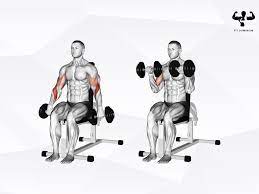
The Seated High-Bayesian Curl is a nuanced exercise that targets the biceps with precision. To fully engage the biceps, ensure your elbows remain stationary by your sides throughout the movement. This focus on form prevents the use of momentum, which is a common pitfall in bicep exercises.
When performing this curl, it’s crucial to maintain a controlled motion. Squeeze your biceps at the peak of the movement and then slowly lower the weight back to the starting position. This technique guarantees maximum tension on the biceps, fostering optimal growth.
Jeff Nippard offers practical advice for setting up this exercise: adjust the bench and cables to allow your arms to extend back as far as possible. Starting with the weaker arm can help address any muscle imbalances, ensuring balanced development. Here’s a quick checklist for the Seated High-Bayesian Curl setup:
- Set cables at chest height when seated
- Position the bench to allow full arm extension
- Begin with the weaker arm to correct imbalances
Remember, the key to growth is not just the exercise itself, but also the attention to detail in its execution.
Understanding Biceps Anatomy and Exercise Impact
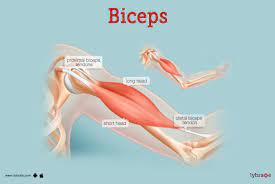
The Role of the Biceps Brachii in Arm Movements
The biceps brachii plays a crucial role in arm movements, extending from the shoulder to the elbow. It is responsible for both elbow flexion, such as in curling motions, and forearm supination, which is the rotation of the palm upwards. The muscle comprises two heads: the long head and the short head, each contributing to these functions in different ways.
The biceps brachii, while known for its role in forearm supination, is actually a weaker elbow flexor compared to the brachialis muscle. This distinction is important when considering exercise selection and technique to effectively target the biceps.
The brachialis muscle, located beneath the biceps brachii, is the primary forearm flexor. It becomes especially active during curls performed with a neutral wrist position. Understanding the anatomy and function of these muscles is essential for designing workouts that effectively engage the biceps and its supporting muscles.
- Biceps Brachii: Forearm supination and elbow flexion.
- Brachialis: Primary forearm flexor, especially during neutral wrist curls.
- Triceps Brachii: Elbow extension, comprising two-thirds of arm muscle mass.
- Brachioradialis & Forearms: Wrist extension and control of wrist/hand movements.
Comparing the Efficacy of Different Bicep Exercises
When it comes to bicep development, not all exercises are created equal. The efficacy of an exercise can be measured by its ability to isolate the biceps and the tension it maintains throughout the movement. For instance, concentration curls are renowned for their ability to isolate the biceps effectively, while resistance band curls maintain tension, especially towards the peak of the movement.
Consistency in your workout routine, whether using free weights or resistance bands, is crucial for muscle growth, strength, and definition.
While there’s no single ‘best’ exercise, a combination of movements is beneficial. Here’s a comparison of two popular bicep exercises:
- Dumbbell Curl: Allows for a full range of motion and variable resistance throughout the curl.
- Resistance Band Curl: Provides consistent tension, with increased resistance towards the end of the movement, potentially leading to muscle hypertrophy.
Ultimately, incorporating a variety of exercises that apply the three principles of muscle growth—mechanical tension, muscle damage, and metabolic stress—will yield the best results. A balanced approach, combining isolation and compound movements, is key to a comprehensive bicep development.
The Science Behind Muscle Hypertrophy and Bicep Growth
Understanding the science of muscle hypertrophy is crucial for effective bicep growth. Muscle hypertrophy occurs when the fibers of the muscles sustain damage or injury during exercise, particularly resistance training. The body then repairs these damaged fibers by fusing muscle cells together, resulting in an increase in muscle mass and cross-sectional area.
The process of hypertrophy involves both the increase in the size of muscle fibers and the addition of new protein strands in muscle fibers. These changes contribute to the overall growth and strength of the muscle.
Several factors influence hypertrophy, including the type of exercise performed, the intensity and volume of the workouts, and nutritional support. Resistance exercises that involve the biceps, such as curls and pull-ups, are particularly effective at stimulating muscle growth in this area. It’s important to vary the exercises and include both concentric and eccentric muscle actions for optimal development.
To maximize bicep growth, consider incorporating a mix of exercises that target different aspects of the biceps muscle group. Below is a simple routine to get started:
- Set one = 12 reps of dumbbell curls
- Set two = 10 reps of incline dumbbell curls
- Set three = 8 reps of hammer curls
Remember, consistency and proper nutrition are key to seeing progress in muscle hypertrophy and achieving the desired bicep growth.
Creating a Balanced Bicep Workout Routine
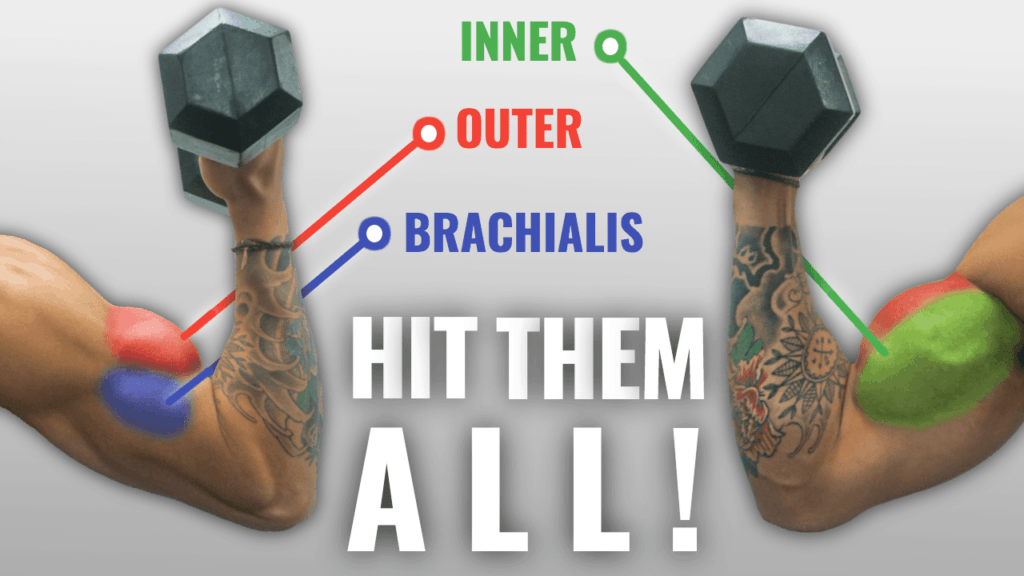
Incorporating a Variety of Exercises for Optimal Growth
To achieve optimal bicep growth, it’s crucial to incorporate a variety of exercises into your routine. This approach ensures that all parts of the bicep muscle, as well as the supporting muscle groups, are engaged and developed evenly. A well-rounded bicep workout might include:
- Preacher Curl: Isolates the biceps for focused tension.
- Hammer Curl: Targets the brachialis, a muscle that can enhance the overall appearance of the biceps.
- Bayesian Curl: Applies scientific principles to maximize muscle activation.
- Concentration Curl: Known for isolating the biceps effectively.
By diversifying your bicep exercises, you not only stimulate muscle growth from different angles but also prevent the plateau effect that can occur when the muscles become accustomed to a specific movement pattern.
Remember, while there might be a ‘best’ exercise for biceps, a combination of movements is advised to cover the three principles of muscle growth: mechanical tension, muscle damage, and metabolic stress. Consistency in your workout regimen, paired with a strategic selection of exercises, will pave the way for significant arm development.
Determining the Right Volume and Frequency for Bicep Training
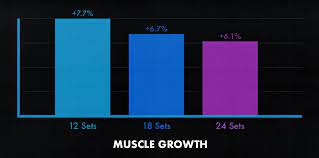
When structuring your bicep workouts, understanding the right volume and frequency is crucial for muscle growth and recovery. Aiming for 3-4 sets of 8-12 reps each provides a solid foundation for hypertrophy. It’s important to gradually increase sets over weeks to avoid overworking the muscles.
Consistency in your training, along with proper rest, is key to achieving significant bicep hypertrophy.
Twice a week is generally considered optimal for bicep training to prevent overtraining and ensure muscles have adequate time to recover. Use weights that allow for a full range of motion for 8-12 reps. If the ideal weight isn’t available, adjust the number of reps accordingly.
Remember to maintain a mind-muscle connection and a controlled pace throughout your exercises to maximize muscle engagement and growth.
Combining Isolation and Compound Movements for Comprehensive Development
To achieve comprehensive bicep development, it’s crucial to blend both isolation and compound movements within your workout regimen. Isolation exercises, such as concentration curls, specifically target the biceps and are excellent for honing in on muscle definition. On the other hand, compound movements like pull-ups and rows engage multiple muscle groups, thereby enhancing overall strength and functional fitness.
Incorporating a mix of these exercises ensures that you’re not only building muscle but also promoting muscular balance and symmetry. A well-rounded routine might look something like this:
- Monday: Focus on heavy compound lifts (e.g., chin-ups, bent-over rows).
- Wednesday: Dedicate to isolation work with lighter weights and higher reps (e.g., concentration curls, cable curls).
- Friday: Combine both types of exercises for a varied and intense session.
Remember, the key to growth is not just the exercise selection but also the consistency and progression over time. Regularly challenge your muscles by increasing the weight or changing the exercises.
While there’s no ‘best’ exercise for everyone, a combination of different movements is generally advised for optimal results. This approach aligns with the principles of muscle growth, allowing for a more effective and realistic training experience.
Conclusion
In summary, the journey to building impressive biceps is multifaceted, requiring dedication to a variety of exercises that target different aspects of the biceps muscles. From the classic Dumbbell Curl to the more focused Dumbbell Preacher Curl and the impactful Dumbbell Hammer Curl, this guide has provided a comprehensive look at top bicep exercises that are essential for anyone looking to enhance their arm strength and aesthetics. Remember, while there may be a ‘best’ exercise for isolation or muscle growth, a combination of movements is key to achieving well-rounded results. Incorporate these exercises into your routine, adjust as necessary for your body’s response, and stay informed with the latest fitness research to ensure your workouts are as effective as possible.
Frequently Asked Questions
What are the fundamental dumbbell exercises for biceps?
The fundamental dumbbell exercises for biceps include the Dumbbell Curl, Dumbbell Preacher Curl, and Dumbbell Hammer Curl. These exercises are pivotal in sculpting the biceps and can be adjusted based on individual needs and fitness levels.
How does understanding biceps anatomy improve my workout?
Understanding biceps anatomy helps you target the right muscles effectively and can improve the efficiency of your workouts. Knowing how the biceps brachii functions can guide you in choosing exercises that maximize muscle tension and growth.
What advanced bicep exercises can I incorporate into my routine?
Advanced bicep exercises include the Incline Dumbbell Curl, Bayesian Cable Curl, and Seated High-Bayesian Curl. These exercises are designed to engage the biceps fully and can be integrated into your routine for more challenging workouts.
How do I create a balanced bicep workout routine?
Creating a balanced bicep workout routine involves incorporating a variety of exercises, determining the right volume and frequency for your training, and combining isolation with compound movements to ensure comprehensive development.
Is there a ‘best’ bicep exercise or should I use a combination?
While certain exercises like concentration curls may isolate the biceps effectively, using a combination of exercises is advisable to cover the three principles of muscle growth and achieve a well-rounded workout.
Can bicep exercises be the sole focus of a workout day?
Biceps, being relatively small muscles, are typically not the sole focus of a workout day. Instead, they are included as part of larger muscle group sessions, such as upper body days, to ensure a balanced approach to muscle development.
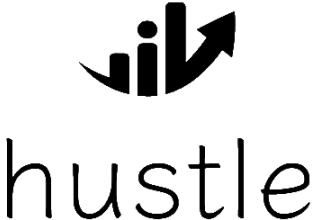
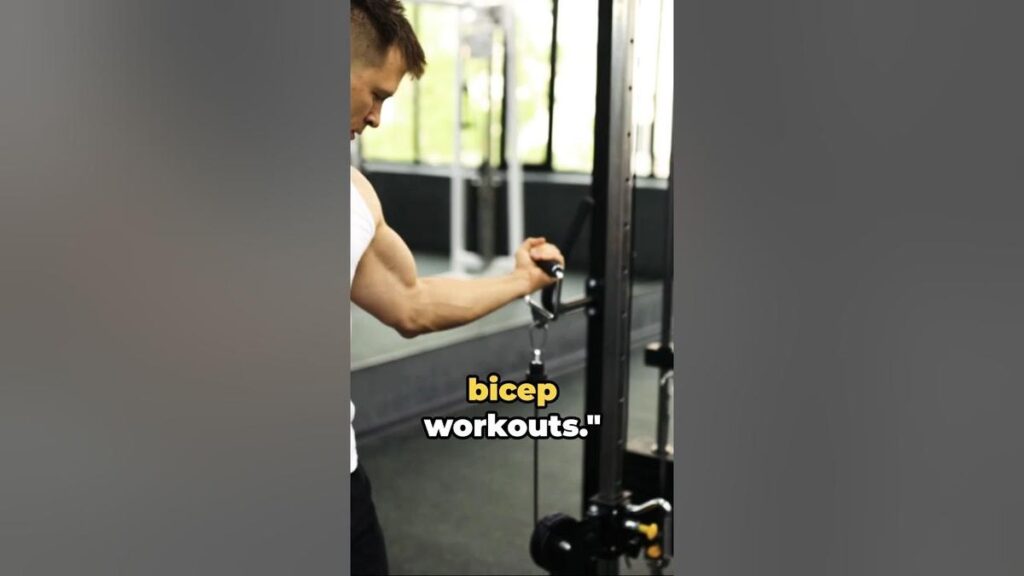

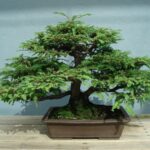



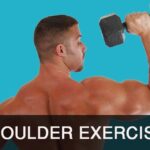
acha thik hay smaj lag gai bye bye
I wanted to take a moment to commend you on the outstanding quality of your blog. Your dedication to excellence is evident in every aspect of your writing. Truly impressive!
I have been exploring for a little for any igh quality articles or eblog posts on this knd off space .
Exploring in Yahoo I eventually stumbled upon this website.
Reading this information So i’m happy to exhibit thnat I have a vrry good uncanny feeling I
discovred exactly what I needed. I most indubifably will mak certain to don?t overlook this sute and give it
a gglance regularly. https://odessaforum.biz.ua/
I have been exploring forr a little for any
higgh qualigy articles or weblog posts oon this kind of space .
Exploring in Yahoo I eventually stumbled ulon this website.
Reading this information So i’m happy to exhibit
that I have a very good uncanny feelingg I discovered exactly what I needed.
I most indubitably will make certain to don?t overlook this site and give iit a
glance regularly. https://odessaforum.biz.ua/
helloI like your writing very so much proportion we keep up a correspondence extra approximately your post on AOL I need an expert in this space to unravel my problem May be that is you Taking a look forward to see you.